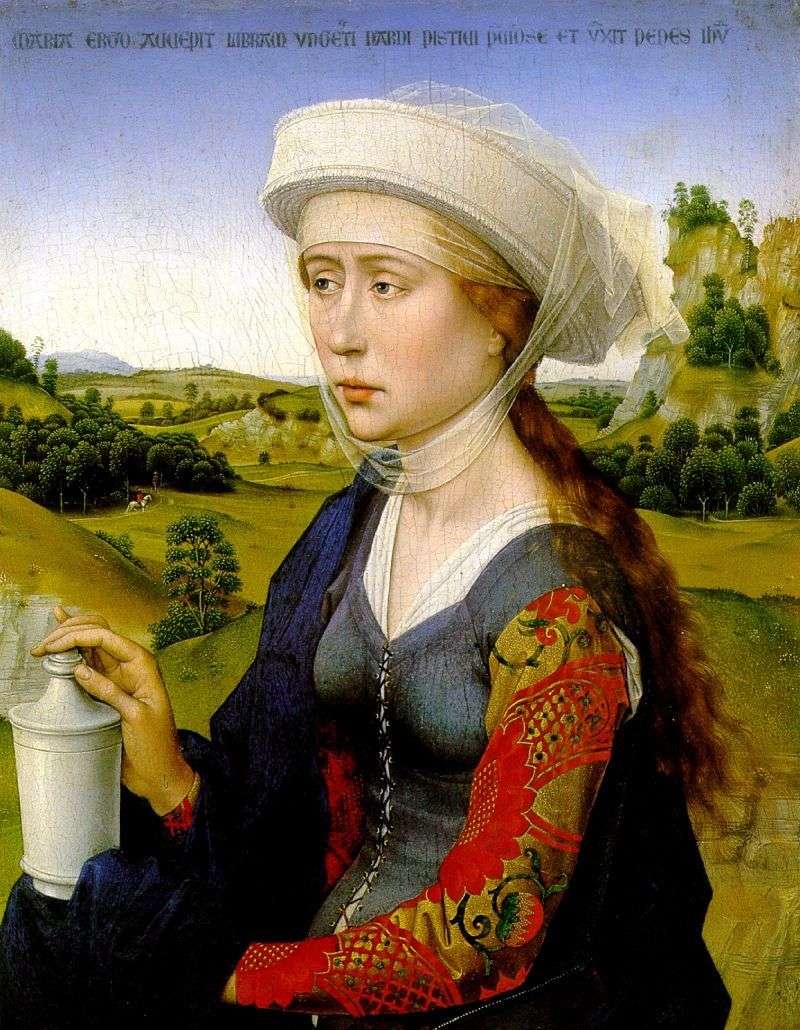
“Triptych of the Family of Marriage” was written after the travel of the artist to Italy. The essence of the picture is the mental stress of the saints immersed in the prayer silence.
The right wing of the triptych, depicting Mary Magdalene, is treated as a portrait of a young woman in a fashionable dress, but her self-absorbed, prayerful detachment speaks of the master’s loyalty to the religious idea. A beautiful landscape, serving as a backdrop for the portrait, is designed in great detail. At the horizon, the forested mountains rise, the soft outlines of nearby hills gently flow.
Unhurried travelers walk and ride in the fields and forests under the blue sky. The landscape fascinates with its fairy-tale beauty. As early as the end of the 16th century, the triptych was located among the descendants of the Marriage family, later it changes owners several times. For the Louvre, the painting was acquired in 1913.
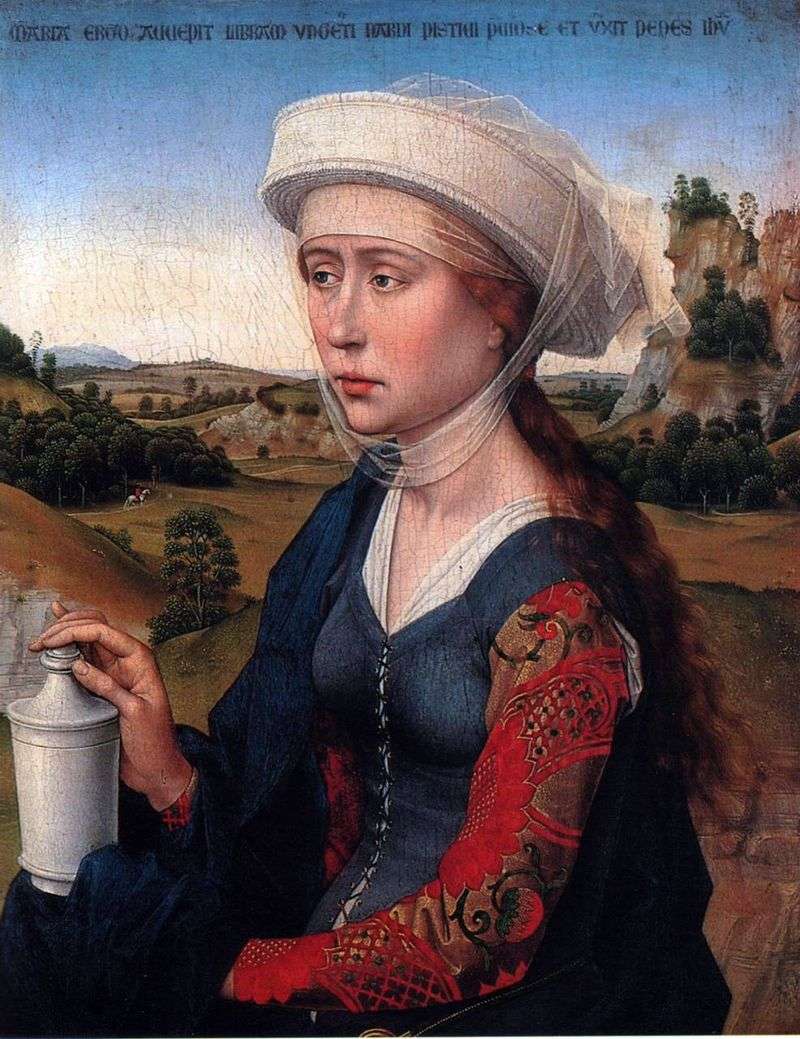 Mary Magdalene. Part of the Triptych of the Marriage Family by Rogier van der Weyden
Mary Magdalene. Part of the Triptych of the Marriage Family by Rogier van der Weyden Triptych of Marriage by Rogier van der Weyden
Triptych of Marriage by Rogier van der Weyden St. John the Baptist and St. Mary Magdalene. Triptych Side Sash by Hans Memling
St. John the Baptist and St. Mary Magdalene. Triptych Side Sash by Hans Memling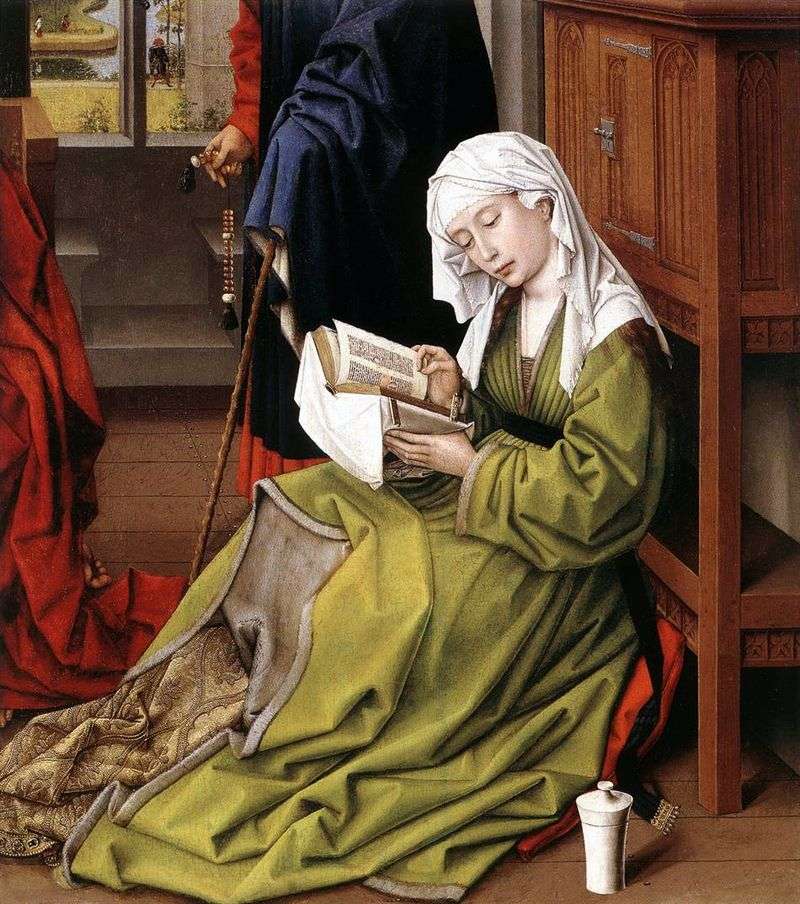 Read Mary Magdalene by Rogier van der Weyden
Read Mary Magdalene by Rogier van der Weyden Triptych “Crucifixion” by Rogier van der Weyden
Triptych “Crucifixion” by Rogier van der Weyden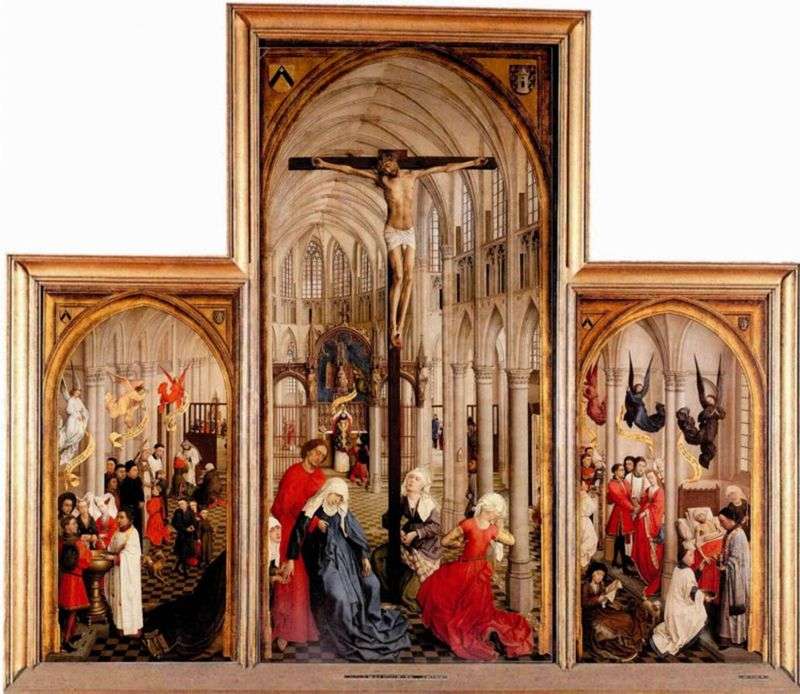 Triptych “The Seven Sacraments” by Rogier van der Weyden
Triptych “The Seven Sacraments” by Rogier van der Weyden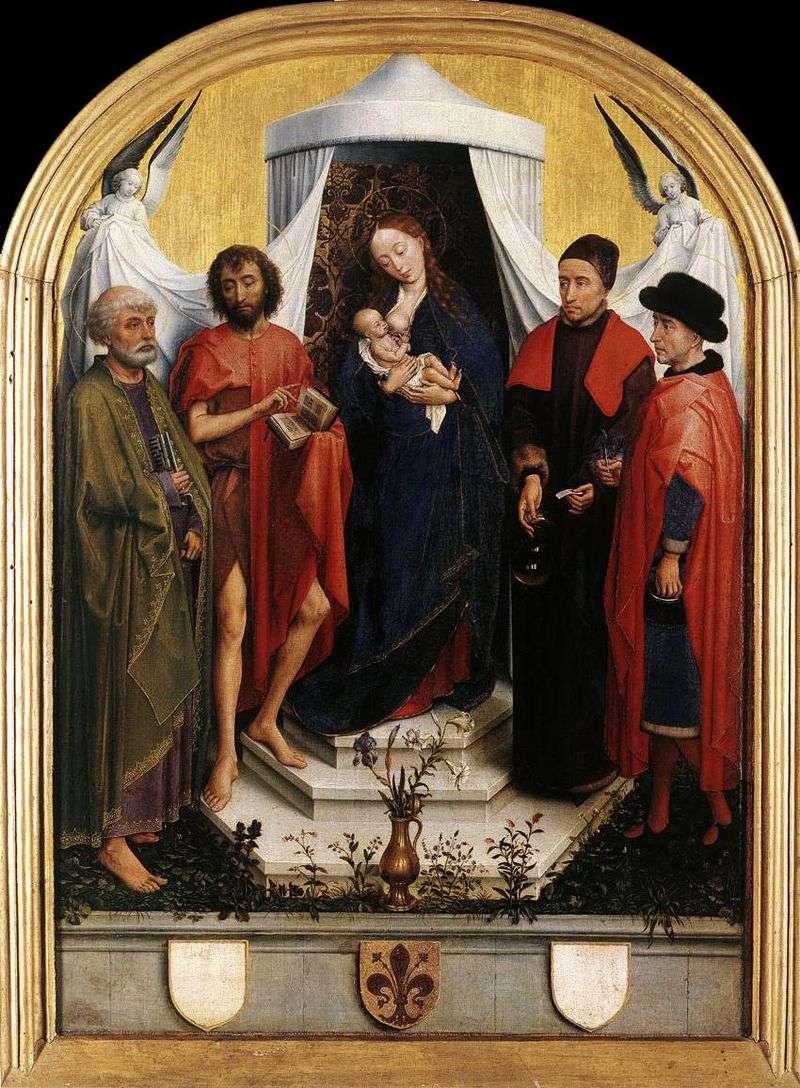 Madonna with the Child and the Four Saints by Rogier van der Weyden
Madonna with the Child and the Four Saints by Rogier van der Weyden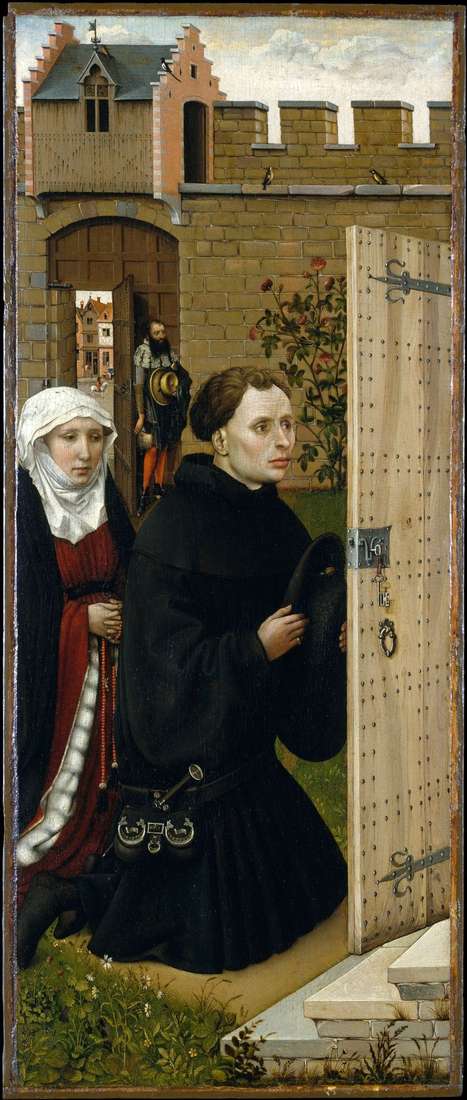 Triptych of Merode. Left wing by Robert Kampen
Triptych of Merode. Left wing by Robert Kampen